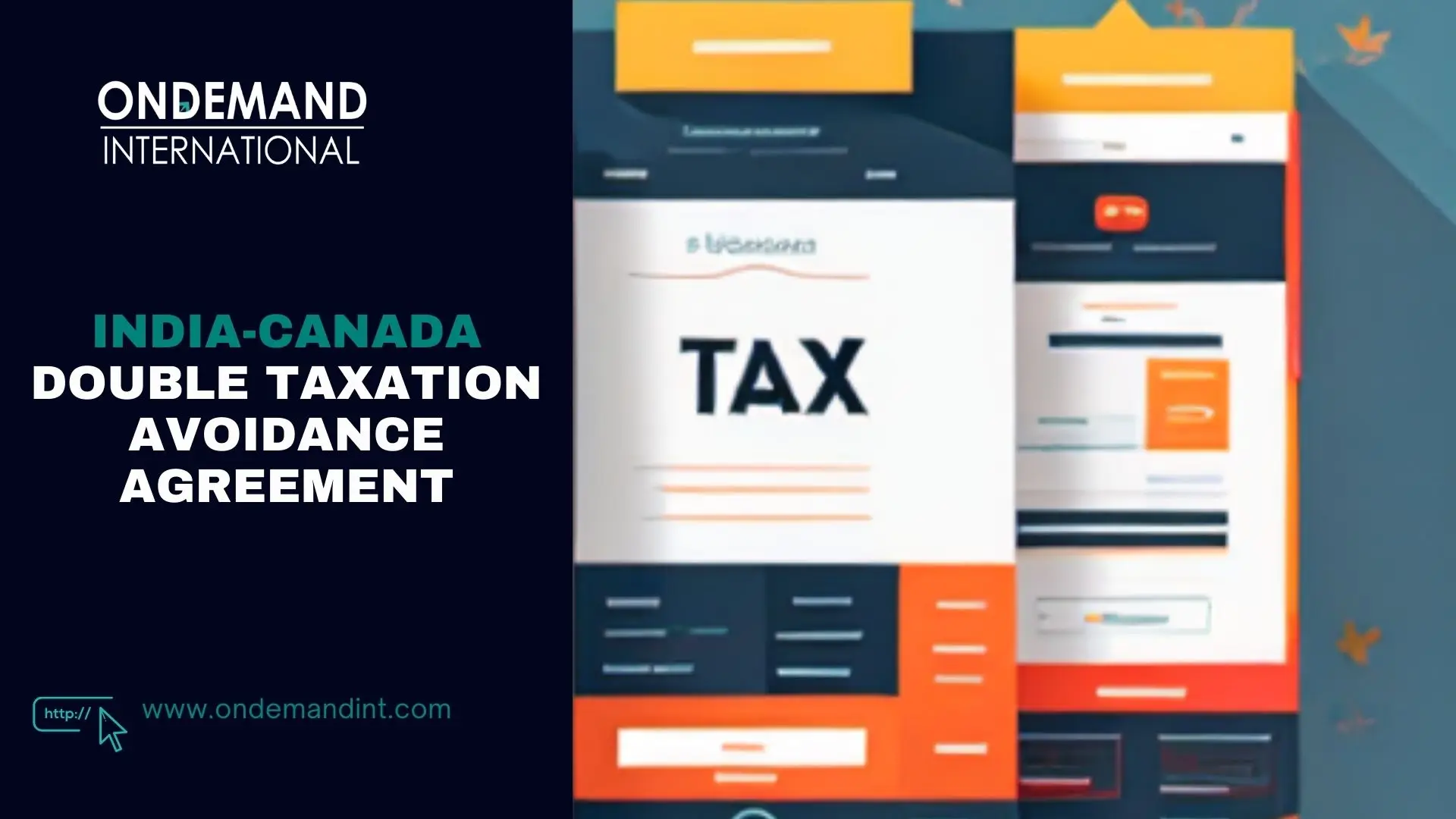
In an era of global interconnectedness, international trade and investments are on the rise, leading to increased economic collaboration between nations. One critical aspect of fostering this collaboration is the establishment of Double Taxation Avoidance Agreements (DTAA) between countries.
The intricacies of international taxation can be intimidating for people and companies negotiating the dynamic economic landscape that connects India and Canada. Fortunately, the Double Taxation Avoidance Agreement (DTAA) stands as a beacon of clarity, providing relief from the burden of double taxation and fostering smooth cross-border financial activities.
This article delves into the intricacies of the DTAA between India and Canada, exploring its key provisions, benefits for individuals and businesses, challenges, and impact on investment and trade.
Understanding the India-Canada Double Taxation Avoidance Agreement
Signed in 1997, the India-Canada DTAA aims to eliminate double taxation on income derived from either country.
It applies to residents of both nations, ensuring fair treatment and clarity for taxpayers engaging in:
- Business activities: Establishing permanent establishments, earning profits, and managing investments
- Personal income: Salaries, pensions, royalties, dividends, and capital gains
The DTAA operates by allocating taxing rights for different types of income, preventing duplicate taxation, and promoting transparency
Benefits of the India-Canada DTAA for Individuals and Businesses
Prevention of Double Taxation:
The primary advantage of the DTAA is the prevention of double taxation on the same income. This guarantees that companies and people doing business in Canada and India do not pay excessive taxes on their income.
Lower Withholding Tax Rates:
Several forms of income, including dividends, interest, and royalties, are subject to lower withholding tax rates under the DTAA. This decrease incentivizes enterprises to do foreign transactions and aids in the promotion of cross-border investments.
Promotion of Trade and Investment:
The DTAA promotes economic cooperation between India and Canada through the removal of hurdles to cross-border trade and investment. This encourages companies to grow and investigate prospects in both nations.
Prevention of Tax Evasion:
By allowing information to be shared throughout tax authorities, the agreement makes it easier to identify and stop tax evasion and avoidance schemes.
Key Provisions of India-Canada DTAA
The DTAA outlines specific rules for taxing various income categories:
- Business profits: Taxed primarily in the country where the permanent establishment is located.
- Dividends: Generally taxed at 10% in the source country, with further taxation potential in the recipient’s country depending on their residency status.
- Capital gains: Taxed in the nation in which the asset is situated unless specific exemptions apply.
- Other income: Specific rules govern taxation of royalties, pensions, and other income sources.
These provisions offer clarity and ensure consistent treatment for taxpayers across both nations.
How India-Canada DTAA Assist in Avoiding Taxes Twice on the Same Income?
The DTAA achieves the avoidance of double taxation through various mechanisms:
Tax Credits:
One popular strategy for preventing double taxation is the use of tax credits. The nation of residence offers credit for taxes paid in the foreign country if a person or firm is subject to taxation in both countries on the same income. This prevents the money from being subjected to multiple taxes.
Exemption Method:
If a certain kind of income has already been subject to taxation in the source nation, it is not subject to taxation in the country where the individual resides, according to the exemption procedure adopted under some DTAA agreements. Double taxation is not possible with this strategy.
Tax Treaties Override Domestic Laws:
The provisions of the DTAA supersede domestic tax laws. In the event of a dispute between the two, the DTAA’s provisions take precedence. This guarantees conformity to the established guidelines and consistency.
Impact of the India-Canada DTAA on Investment and Trade
Increased Cross-Border Investment:
The DTAA facilitates a conducive environment for cross-border investments by providing clarity on tax implications. Businesses are encouraged to investigate the potential in both India and Canada by lowering withholding tax rates and the avoidance of double taxation.
Enhanced Trade Relations:
The clarity in tax regulations and the elimination of uncertainties contribute to a more stable and favorable environment for trade. Companies that are aware that the DTAA offers a structure for equitable and predictable taxation are more likely to participate in import-export operations.
Boost to Economic Growth:
By reducing tax-related barriers, the India-Canada DTAA promotes economic growth in both countries. Businesses can allocate resources more efficiently, and individuals can pursue international employment opportunities without the fear of excessive tax burdens.
Challenges of the India-Canada DTAA
While the India-Canada DTAA brings numerous benefits, it is not without its challenges. Some common issues include:
- Interpretation and Implementation: Divergent interpretations and inconsistent implementation of the agreement’s provisions can lead to disputes between the tax authorities of India and Canada. Resolving such disputes requires effective communication and collaboration between the two nations.
- Evolution of Business Models: The rapid evolution of business models, particularly in the digital economy, poses challenges in applying traditional tax rules. Updating the DTAA to address these modern challenges is a continuous process that requires flexibility and foresight.
- Anti-Abuse Measures: To prevent misuse of the DTAA for tax evasion purposes, both countries have incorporated anti-abuse measures. However, implementing these measures without hindering legitimate business activities requires a delicate balance.
Conclusion
The India-Canada Double Taxation Avoidance Agreement plays an essential role in promoting cross-border investment, commerce, and economic cooperation between the two countries. The agreement helps people and companies that conduct business internationally by preventing double taxation, defining tax obligations, and offering dispute resolution procedures.
However, navigating its provisions and addressing challenges require careful attention and expert guidance to optimize the benefits and ensure compliance with tax laws.
FAQ’s
The DTAA applies to residents of India and Canada who earn income in the other country, including individuals, businesses, and other entities.
Taxpayers can typically claim benefits under the DTAA by providing a tax residency certificate and complying with the relevant provisions of the agreement.
Yes, DTAA agreements can be modified or updated through negotiations between the involved countries. Changes may be made to address evolving economic scenarios, technological advancements, and other factors influencing cross-border transactions.

